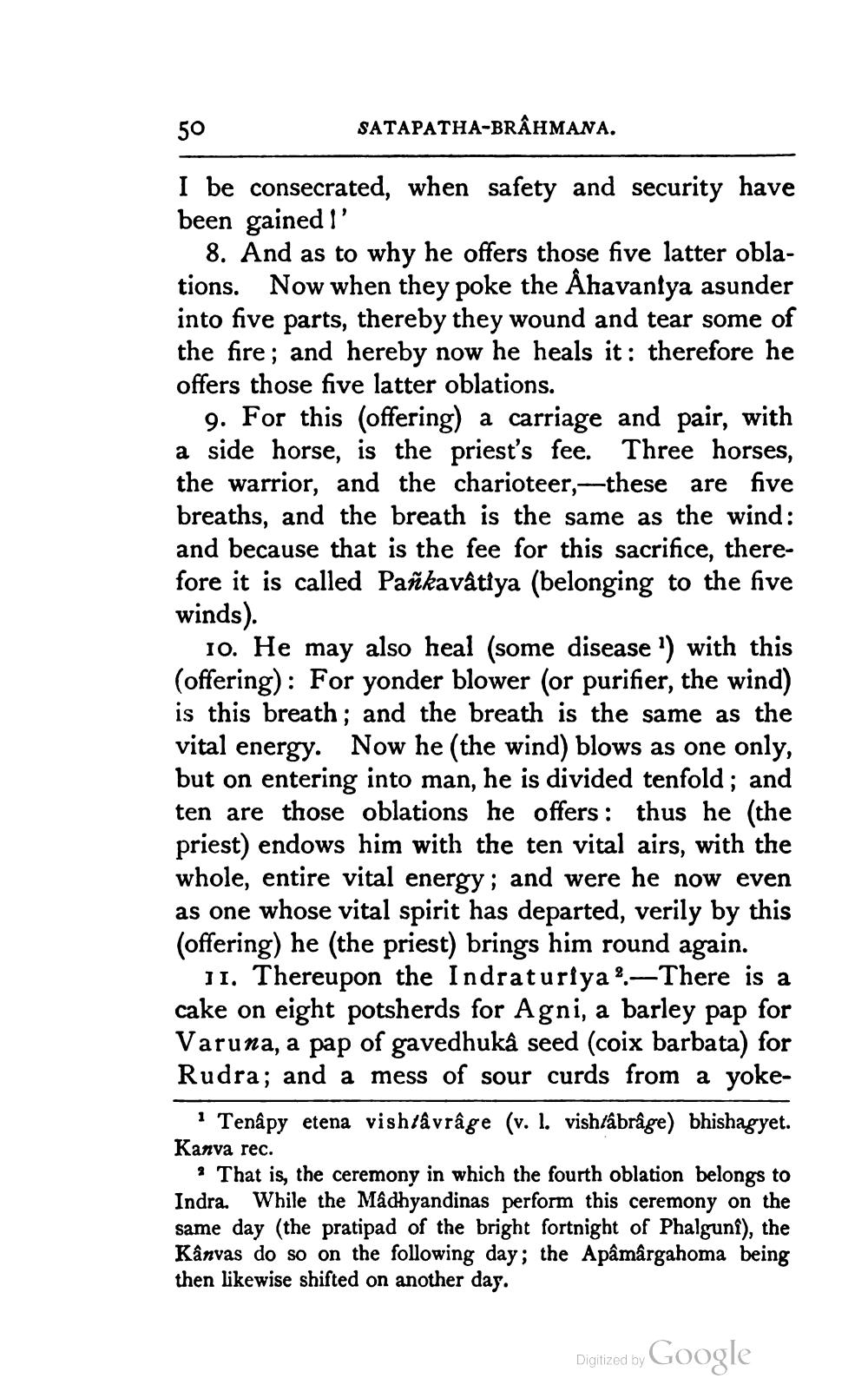________________
50
SATAPATHA-BRAHMANA.
I be consecrated, when safety and security have been gained I'
8. And as to why he offers those five latter oblations. Now when they poke the Ahavanlya asunder into five parts, thereby they wound and tear some of the fire; and hereby now he heals it: therefore he offers those five latter oblations.
9. For this offering) a carriage and pair, with a side horse, is the priest's fee. Three horses, the warrior, and the charioteer,—these are five breaths, and the breath is the same as the wind: and because that is the fee for this sacrifice, therefore it is called Pañkavâtiya (belonging to the five winds).
10. He may also heal (some disease ') with this (offering): For yonder blower (or purifier, the wind) is this breath; and the breath is the same as the vital energy. Now he (the wind) blows as one only, but on entering into man, he is divided tenfold; and ten are those oblations he offers: thus he (the priest) endows him with the ten vital airs, with the whole, entire vital energy; and were he now even as one whose vital spirit has departed, verily by this (offering) he (the priest) brings him round again.
11. Thereupon the Indraturiya-There is a cake on eight potsherds for Agni, a barley pap for Varuna, a pap of gavedhukâ seed (coix barbata) for Rudra; and a mess of sour curds from a yoke
· Tenâpy etena vishtâvrâge (v. l. vishtâbrage) bhishagyet. Kanva rec.
? That is, the ceremony in which the fourth oblation belongs to Indra While the Madhyandinas perform this ceremony on the same day (the pratipad of the bright fortnight of Phalgunî), the Kanvas do so on the following day; the Apâmârgahoma being then likewise shifted on another day.
Digitized by Google




